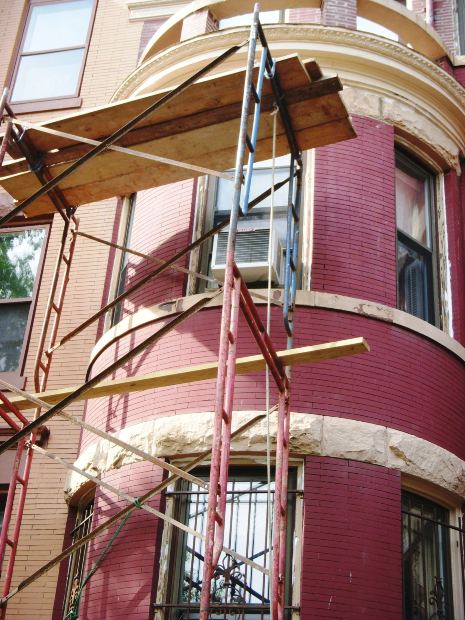A worker was injured Tuesday after falling from the Hingham Middle School construction site.
The 45-year-old man from New Bedford, MA, apparently fell from the third story scaffolding of the building around 1 p.m. on Tuesday afternoon. According to Hingham Police Sergeant Steven Dearth, the worker was conscious when paramedics arrived, and was taken to South Shore Hospital in Weymouth, MA. 
Construction at the school has since stopped while officials from the Occupational Safety and Health Administration (OSHA) investigate the incident. The identity and injuries of the worker are still unknown.
While it is still unknown the reason to why the worker fell in the first place, there are factors that may have played a role into his fall. Scaffolding is a temporary platform that is often used on construction sites to reach areas that are not accessible by ladder. These types of accidents occur for a variety of reasons including incorrect assembly, manufacturing defects, collapse or failure, broken platform, slippery surfaces, and inadequate training or experience with the equipment. And because of the height of these structures, injuries are severe or fatal and may include fractures, broken bones, spinal cord and traumatic head injuries, and even death.
Scaffolding and general requirements on construction sites are the number one safety violation cited by OSHA officials. Construction falls are also the number one cause of death and injury in workplace settings in the United States, accounting for 251 deaths (35% of total workplace deaths) in 2011.
Safety Tips for Workers
All laborers who regularly work on scaffolding must be properly trained with suspension scaffolding and fall protection equipment. In most scaffolding fall cases, the accident was completely preventable.
When working on scaffolding, workers should take the following precautions:
-Learn the proper OSHA standards and regulations for working on scaffolds; such as weight capacity, construction, fall protection, proper scaffolding use.
-Ensure that the scaffolding being used is designed correctly and conforms to OSHA regulations.
-Shield all scaffold suspension ropes and body belt harness system droplines from abrasive or sharp edges to prevent them from being severed.
-Carefully inspect all scaffolds and their components, as well as personal fall protection equipment.
-Ensure that all workers are well equipped with proper fall protection equipment prior to stepping onto a scaffold.
-Properly anchor tiebacks of the scaffolding at different points.
Continue reading
 Massachusetts Workers' Compensation Lawyer Blog
Massachusetts Workers' Compensation Lawyer Blog


 The construction business remains the most hazardous work industry in the United States, accounting for nearly 20% of all workplace fatalities annually. While both victims in this case are expected to survive, the incident serves as yet another reminder to construction workers of how dangerous their job can be. Carpenters and roofers incur risky situations on a day-to-day basis, and among these types of workers, falls are the leading cause of injury or death. In a report published by The Massachusetts Coalition for Occupational and Safety Health, out of the 32 reported work-related deaths in Massachusetts last year, six were cause by falls.
The construction business remains the most hazardous work industry in the United States, accounting for nearly 20% of all workplace fatalities annually. While both victims in this case are expected to survive, the incident serves as yet another reminder to construction workers of how dangerous their job can be. Carpenters and roofers incur risky situations on a day-to-day basis, and among these types of workers, falls are the leading cause of injury or death. In a report published by The Massachusetts Coalition for Occupational and Safety Health, out of the 32 reported work-related deaths in Massachusetts last year, six were cause by falls. 








